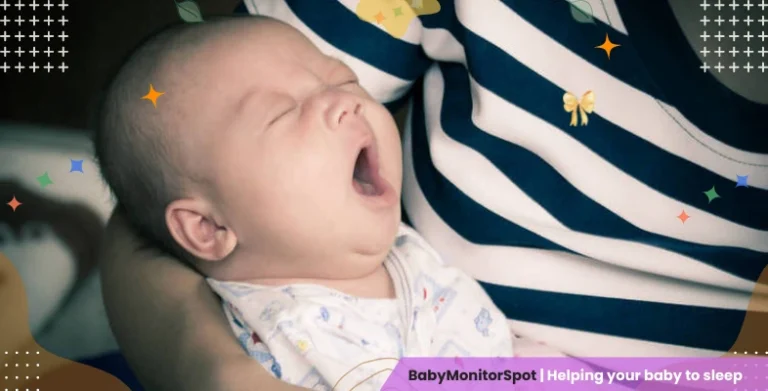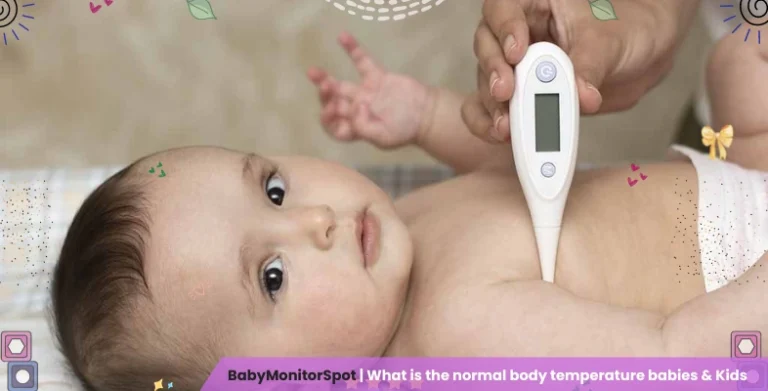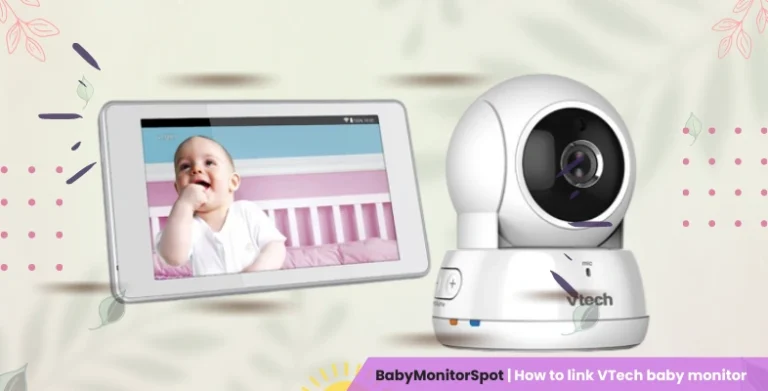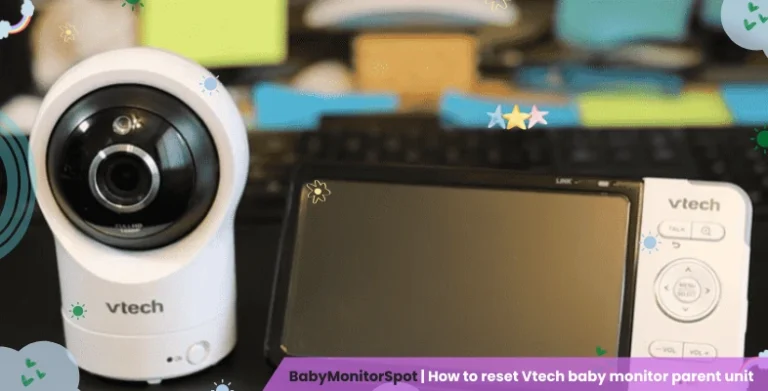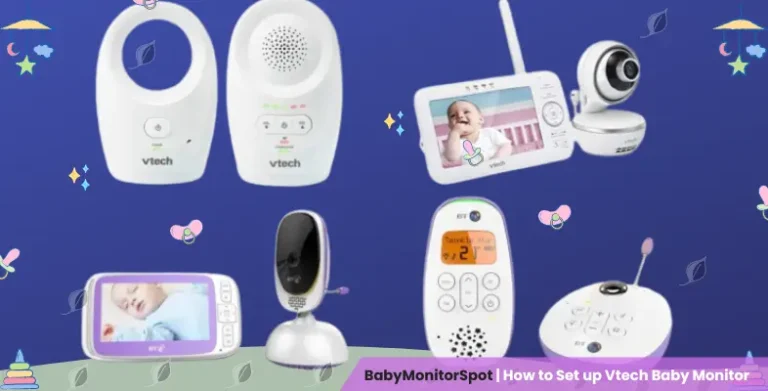How To Buy A Baby Monitor In 2023? | Audio, Video, Movement and Breathing Baby Monitor Buying Guide
- Ejaz
- Updated | May 13, 2023

If you’re a parent, you know how important it is to have a baby monitor to keep tabs on your little one. But how to buy a baby monitor, and what feature should I consider? Unfortunately, purchasing a baby monitor is a daunting task. You need to consider many features before you make a purchase.
But don’t worry 🙂
In this comprehensive guide, I will walk you through how to buy the best baby monitor. I will also explain what features to look for and give you some tips.
Let’s Start!
What are the essential factors to consider before buying a Baby Monitor?
As mentioned earlier, many baby monitors are available in the market, and it can be challenging to choose the best one.
Here are the factors that you must consider when selecting audio, video, movement, and breathing baby monitors. I will discuss all of them in detail later in this article.
How To Buy An Audio Baby Monitor? Important Buying Factors
- Sound Quality
- Sound-sensitive lights
- Microphone sensitivity
- Volume Control
- Room temperature display
- Motion Sensing
- Battery And Charging Light Indicators
- Long range baby monitor
- Size
- Two Way Talk
- Lullabies
- Portability
- Frequency
- Price
- Power source:
- Number of Speakers
- Wireless or Wired
How To Buy A Video Baby Monitor? Important Buying Factors
- Sound Quality
- Sound-Sensitive lights
- Microphone Sensitivity
- Volume Control
- Room Temperature Display
- Motion Sensing
- Battery And Charging Light Indicators
- Long range Baby Monitor
- Size
- Two Way Talk
- Lullabies
- Portability
- Frequency
- Price
- Power source:
- Number of Speakers
- Wireless or Wired
- Auto Night Vision:
- Night Light Sensitivity Adjuster
- Video Features
- Video Resolution and Quality
- Camera Adjustments Zoom, Pan And Tilt.
- Remote Control
- Alexa or Google Home Compatibility
How To Buy A Movement and Breathing Baby Monitor? Important Buying Factors
- Wearable Device Like Sock, Band, or Diaper Clip
- Sensor Pads
- Sound Quality
- Sound-Sensitive lights
- Microphone Sensitivity
- Volume Control
- Room Temperature Display
- Motion Sensing
- Battery And Charging Light Indicators
- Long Range Baby Monitor
- Size
- Two Way Talk
- Lullabies
- Portability
- Price
- Power source:
- Number of Speakers
1. Sound Quality:
The quality of sound you hear is also an important consideration. Most parents prefer to buy a baby monitor that has high-quality audio. Pick a baby monitor with clear sound quality.
2. Sound Sensitive Lights:
When babies cry, this device illuminates different numbers of lights depending on how loudly the baby is crying. You can turn off the audio monitoring but leave the light on if you need to do something else and your partner or baby care taker is there. It may help if you’re sleeping during the night because the lights might not wake you up
3. Microphone sensitivity:
This is a very important thing to consider when buying a baby monitor. Make sure that it has a microphone that is sensitive enough to pick up any noises in your baby’s room.
4. Volume Control:
You should always make sure that the volume control is adjustable. It should be possible to turn the volume up or down to suit your needs.
5. Temperature Sensor:
It is important to maintain the temperature of the baby’s room. Luckily the temperature sensor feature will allow you to keep an eye on the nursery’s temperature.
The temperature sensor will notify you if the baby’s room temperature is above or below the optimal temperature.
6. Motion Sensing:
The motion sensing feature is another crucial feature to look out for in a baby monitor. You need to pick a monitor that can detect your baby’s movement and notify you.
7. Battery And Charging Light Indicators:
Battery life is one of the most vital things to consider when buying a baby monitor. It should last at least 7 to 8 hours, but ideally, it will last 10 hours. You don’t want to be running out of battery during a night shift. Also good baby monitors have low and full battery light indicators to show battery charging status.
8. Range:
Another critical factor to consider when buying a baby monitor is its range. If you are worried about the camera being unable to pick up your baby even if it is in the same room, then you should go for a wide-angle camera. A long range baby monitor gives you a better chance of picking up your baby no matter where they are in the room. The average range is 30ft, but you choose a monitor according to your house.
9. Size:
The first and most important thing to consider when buying a baby monitor is its size. It should be big enough to cover the room where you will be placing it and large enough to see your baby on the screen.
10. Two Way Talk:
A good baby monitor should have a two way talk feature. This will help you if your child gets scared in the middle of the night and you want to calm him down.
11. Lullabies:
You must also consider the lullabies option. The best baby monitors should have at least four different options of lullabies so that you can choose one depending on your mood.
12. Portability:
Another thing you must consider when choosing a baby monitor is its portability. It would be best if you are looking for a monitor that is easy to install and carry around.
13. Frequency:
A monitor operating on a different frequency could cause problems. Make sure you choose a monitor that doesn’t interfere with your other devices.
14. Price:
You should buy a baby monitor that does what you want at an affordable price. It is essential to buy a good quality monitor because you will be using it for a long time. Also, please don’t go for cheap monitors because you won’t get good performance from them.
15. Power source:
The power source is an important factor that you need to consider. Some monitors require a power cord, and some are battery-powered. Battery-powered monitors are great when you plan to move them around. They provide long-lasting performance even when they are moved around.
16. Number of Speakers:
Another feature that you need to consider is the number of speakers. Some monitors come with only one speaker while others come with two or more. Pick according to your need. Buy a baby monitor with two speakers if you have a big room.
17. Wireless or Wired:
Many modern monitors allow you to connect them to your wireless router. This feature is beneficial when you want to move your monitor without hassle. But it has a limited range.
The wired monitor has a long range and depends upon the wire. However, wired monitors are difficult to set up due to the cables. It would help if you mounted the monitor at a suitable place and safely hide the wires.
18. Auto Night Vision:
Another vital feature to consider when buying a baby monitor is whether it has an auto night vision function. It is essential to have a good night vision system if you want to keep an eye on your sleeping baby throughout the night. Also, you can easily see the baby’s face on the monitor’s screen and tell whether they are awake or sleeping.
19. Night Light Sensitivity Adjuster:
Another important feature to consider when buying a baby monitor is the sensitivity adjuster. This adjustable feature lets you control how much light gets through the camera.
The lower the light sensitivity, the less light the camera sees. If you are worried about the light coming in from outside, you can set the sensitivity level as high as you want.
20. Video Resolution and Quality:
The video resolution of the monitor should be high enough to give you clear images of your baby. A good video resolution is between 800×600 and 1024×768.
Some of the monitors offer HD-quality video. If you are planning to buy a monitor for your baby, then HD-quality video is essential.
21. Video Features:
Monitors aren’t just limited to audio surveillance. You can find many other options that offer video surveillance. With these, you can quickly check your monitor and watch what’s happening without deciphering the baby’s cry or waking him up. You don’t need to go into the baby’s room if he’s asleep, and you can check to see if he’s okay without waking him up. You can check on your baby at three AM without risking upsetting him.
22. Camera Adjustments:
Features like panning and zooming help you see everything happening in the baby’s room, especially when the baby moves around.
23. Remote Control:
A remote viewing feature allows you to view your baby away from baby room. Some monitors have a video chat option as well. It is great when you must communicate with your baby at work or in the other room.
24. Alexa or Google Home Compatibility:
If you are going to purchase a monitor that is compatible with Alexa, then you need to consider the compatibility. You can find monitors that are compatible with Alexa as well as Google Home.
25. Wearable Device:
Some parents wear their baby monitor with them during the day. This is called a wearable device. Movement and breathing baby monitors have wearable devices. Before these monitors must consider them. These devices are easy to use and mostly they are 3 types of wearable devices:
- Sock
- Band
- Clip
26. Sensor Pads:
Sensor pads can detect whether babies are awake by sensing movements. These sensors can also help determine whether babies are still alive after an apnea event (breathing stop). Apnea events may occur during sleep, but they can happen anytime.
These events last anywhere from 12-20 seconds to two minutes. These sensors can alert parents about an apnea event. This information helps parents know what to do if they hear unusual noises at night.
Do you need a Baby Monitor?
You may want to buy a baby monitor because you feel your child needs protection. See what best describes you:
- A baby monitor isn’t needed since the parents won’t be away from the baby for long periods. Also, getting one is easy since it’s an electronic device.
- You need a baby monitor if there are times when you’re unable to listen to your infant. Baby monitors are recommended if a doctor tells you it’s not affecting your baby’s health.
Baby monitors work well for parents because many problems happen while sleeping. When parents use a monitor, they tend to get more restful sleep. A monitor also gives them peace of mind when their children wake up at night and need help.
At what point do you need a baby monitor??
Without a doubt, you will need a baby monitor when you have a newborn in the house. For newborn babies, a video baby monitor is the best option.
Movement baby monitors are recommended during pregnancy, but before using them, make sure your doctor allows you to use them.
Pro Tips:
Here are some pro tips for choosing a baby monitor.
- Choose a phone with a wireless frequency of 1.8 GHz or higher. It will decrease interference and improve clarity.
- Find a model that has a low battery life light indicator.
- Go wireless.
- Find a model that has a sound activated light indicator.
- I prefer a video baby monitor.
Conclusion
To find a baby monitor that fits your needs, you should first decide what features you need
on a baby monitor. I have discussed 26 important buying factors parents should consider when selecting a baby monitor.
If you want to listen to your baby’s voice and wake up alert, go with the audio baby monitor. But if you want audio and video, pick a smart video baby monitor.
I hope this was helpful! Share your choice in the comment section below.
Thank You!

